The Standard Model, despite its mundane name, stands as the most accurate scientific theory, successfully predicting various experimental outcomes and culminating in the discovery of the Higgs boson in 2012. It encapsulates nearly all fundamental forces except gravity and remains undefeated in scientific tests over the past fifty years.
The Standard Model. It is such a dull name for the most accurate scientific theory known to human beings.
More than a quarter of the Nobel Prizes in physics of the last century are direct inputs to or direct results of the Standard Model. Yet its name suggests that if you can afford a few extra dollars a month you should buy the upgrade. As a theoretical physicist, I’d prefer The Absolutely Amazing Theory of Almost Everything. That’s what the Standard Model really is.
Many recall the excitement among scientists and media over the 2012 discovery of the Higgs boson. But that much-ballyhooed event didn’t come out of the blue – it capped a five-decade undefeated streak for the Standard Model. Every fundamental force but gravity is included in it. Every attempt to overturn it to demonstrate in the laboratory that it must be substantially reworked – and there have been many over the past 50 years – has failed.
In short, the Standard Model answers this question: What is everything made of, and how does it hold together?
The smallest building blocks
You know, of course, that the world around us is made of molecules, and molecules are made of atoms. Chemist Dmitri Mendeleev figured out in the 1860s how to organize all atoms – that is, the elements – into the periodic table that you probably studied in middle school. But there are 118 different chemical elements. There’s antimony, arsenic, aluminum, selenium … and 114 more.
Physicists like things simple. We want to boil things down to their essence, a few basic building blocks. Over a hundred chemical elements is not simple. The ancients believed that everything is made of just five elements – earth, water, fire, air, and aether. Five is much simpler than 118. It’s also wrong.
By 1932, scientists knew that all those atoms are made of just three particles – neutrons, protons and electrons. The neutrons and protons are bound together tightly into the nucleus. The electrons, thousands of times lighter, whirl around the nucleus at speeds approaching that of light. Physicists Planck, Bohr, Schroedinger, Heisenberg, and friends had invented a new science – quantum mechanics – to explain this motion.
It would have been pleasant to end there, three particles alone. Even easier than five is three. but how was it kept together? Electromagnetism holds the negatively charged electrons and positively charged protons together. But despite the fact that they should be forcibly forced apart by their positive charges, the protons are all crowded together in the nucleus. Neutrons that are neutral are useless.
What binds these protons and neutrons together? “Divine intervention,” a man on a Toronto street corner told me; he had a pamphlet, and I could read all about it. But this scenario seemed like a lot of trouble even for a divine being – keeping tabs on every single one of the universe’s 108° protons and neutrons and bending them to its will.
Expanding the zoo of particles
Meanwhile, nature cruelly declined to keep its zoo of particles to just three. Really four, because we should count the photon, the particle of light that Einstein described. Four grew to five when Anderson measured electrons with positive charge – positrons – striking the Earth from outer space. At least Dirac had predicted these first anti-matter particles. Five became six when the pion, which Yukawa predicted would hold the nucleus together, was found.
Then came the muon – 200 times heavier than the electron, but otherwise a twin. “Who ordered that?” I.I. Rabi quipped. That sums it up. Number seven. Not only not simple, but redundant.
By the 1960s there were hundreds of “fundamental” particles. In place of the well-organized periodic table, there were just long lists of baryons (heavy particles like protons and neutrons), mesons (like Yukawa’s pions), and leptons (light particles like the electron, and the elusive neutrinos) – with no organization and no guiding principles.
Into this breach sidled the Standard Model. It was not an overnight flash of brilliance. No Archimedes leapt out of a bathtub shouting “eureka.” Instead, there was a series of crucial insights by a few key individuals in the mid-1960s that transformed this quagmire into a simple theory, and then five decades of experimental verification and theoretical elaboration.
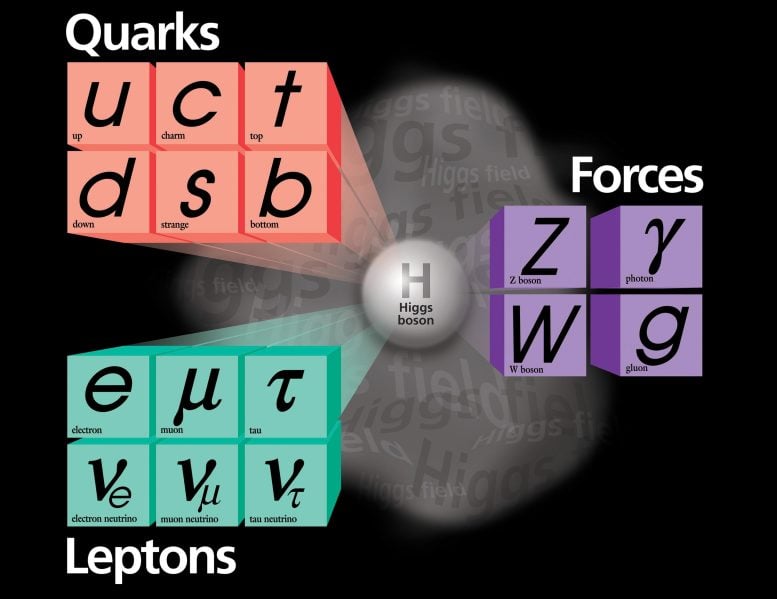
The Standard Model of elementary particles provides an ingredients list for everything around us. Credit: Fermi National Accelerator Laboratory
Quarks. They come in six varieties we call flavors. Like ice cream, except not as tasty. Instead of vanilla, chocolate and so on, we have up, down, strange, charm, bottom and top. In 1964, Gell-Mann and Zweig taught us the recipes: Mix and match any three quarks to get a baryon. Protons are two ups and a down quark bound together; neutrons are two downs and an up. Choose one quark and one antiquark to get a meson. A pion is an up or a down quark bound to an anti-up or an anti-down. All the material of our daily lives is made of just up and down quarks and anti-quarks and electrons.
Simple. Well, simple-ish, because keeping those quarks bound is a feat. They are tied to one another so tightly that you never ever find a quark or anti-quark on its own. The theory of that binding, and the particles called gluons (chuckle) that are responsible, is called quantum chromodynamics. It’s a vital piece of the Standard Model, but mathematically difficult, even posing an unsolved problem of basic mathematics. We physicists do our best to calculate with it, but we’re still learning how.
The other aspect of the Standard Model is “A Model of Leptons.” That’s the name of the landmark 1967 paper by Steven Weinberg that pulled together quantum mechanics with the vital pieces of knowledge of how particles interact and organized the two into a single theory. It incorporated the familiar electromagnetism, joined it with what physicists called “the weak force” that causes certain radioactive decays, and explained that they were different aspects of the same force. It incorporated the Higgs mechanism for giving mass to fundamental particles.
Since then, the Standard Model has predicted the results of experiment after experiment, including the discovery of several varieties of quarks and of the W and Z bosons – heavy particles that are for weak interactions what the photon is for electromagnetism. The possibility that neutrinos aren’t massless was overlooked in the 1960s, but slipped easily into the Standard Model in the 1990s, a few decades late to the party.
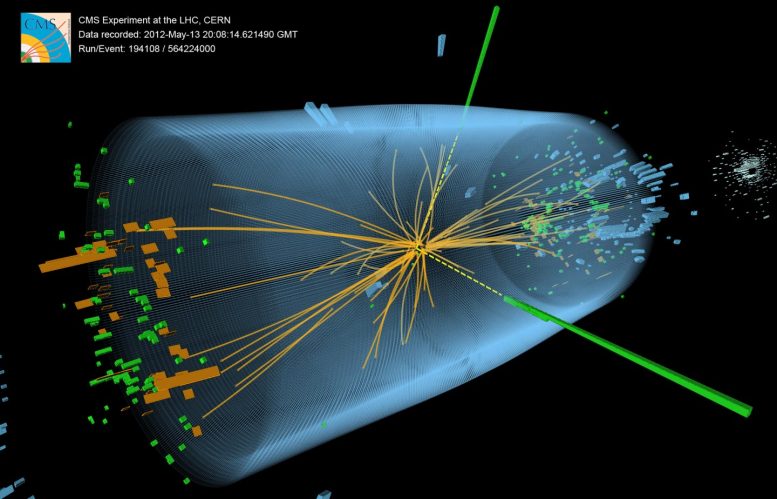
3D view of an event recorded at the CERN particle accelerator showing characteristics expected from the decay of the SM Higgs boson to a pair of photons (dashed yellow lines and green towers). Credit: McCauley, Thomas; Taylor, Lucas; for the CMS Collaboration CERN
Discovering the Higgs boson in 2012, long predicted by the Standard Model and long sought after, was a thrill but not a surprise. It was yet another crucial victory for the Standard Model over the dark forces that particle physicists have repeatedly warned loomed over the horizon. Concerned that the Standard Model didn’t adequately embody their expectations of simplicity, worried about its mathematical self-consistency, or looking ahead to the eventual necessity to bring the force of gravity into the fold, physicists have made numerous proposals for theories beyond the Standard Model. These bear exciting names like Grand Unified Theories, Supersymmetry, Technicolor, and String Theory.
Sadly, at least for their proponents, beyond-the-Standard-Model theories have not yet successfully predicted any new experimental phenomenon or any experimental discrepancy with the Standard Model.
After five decades, far from requiring an upgrade, the Standard Model is worthy of celebration as the Absolutely Amazing Theory of Almost Everything.
Written by Glenn Starkman, Distinguished University Professor of Physics, Case Western Reserve University.
This article was first published in The Conversation.![]()

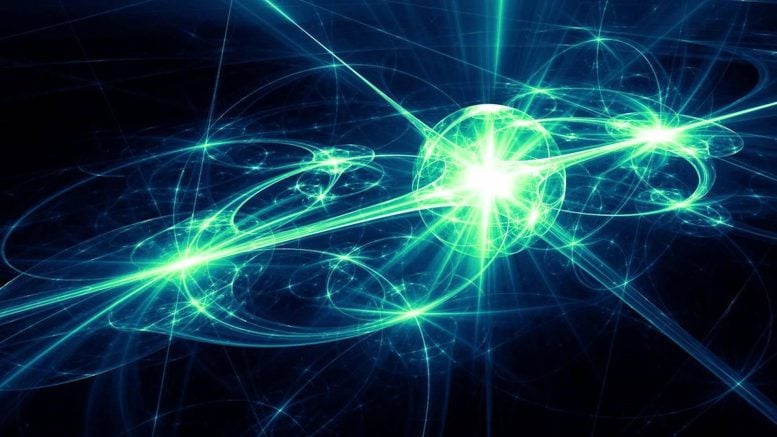
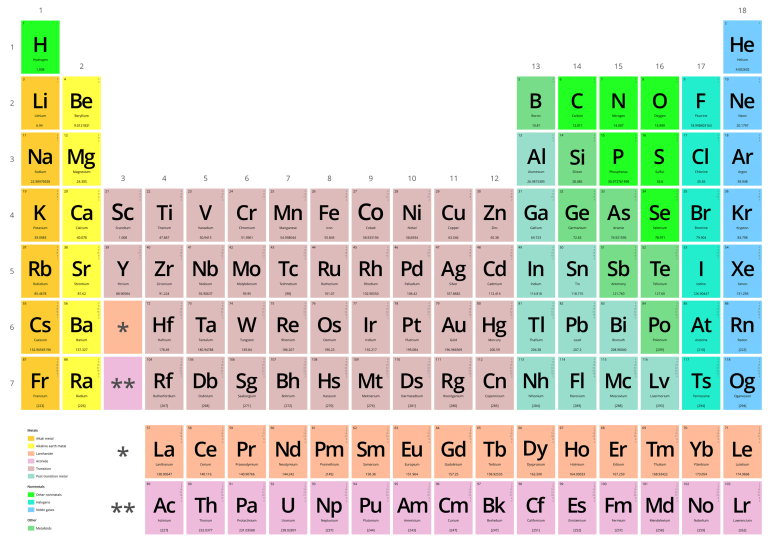


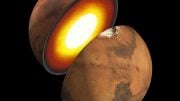
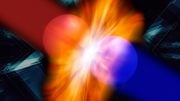
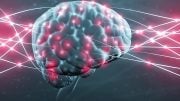

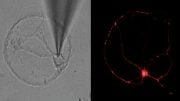
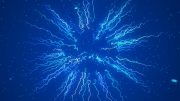
But… what the heck IS a Quark?
If that’s a real question…
A Quark is a fundamental particle that contains a fractional electrical charge (either -1/3e or +2/3e), and fractional spin. Three quarks combine to make a proton or neutron.
Quark is also the name given to a disgusting German cottage cheese.
Yet, the Standard Model (SM) isn’t the answer. Even if we ignore the (possible) existence of dark matter and dark energy, there are some things that the SM cannot explain. It is not complete. The above article does a great job ignoring the holes.
1) Neutrinos have masses (barely mentioned in the article) and these masses are not explainable by the SM.
2) Matter – antimatter imbalance. SM cannot explain this. Since we exist in a world of matter and antimatter is just seen in experiments or coming from particles zooming in the universe and hitting the earth, that’s something that is hard to hide under the carpet.
3) The SM was created piecemeal wise from the three forces which affect atoms (electromagnetic, weak and strong forces.) Gravity is not included. At all. That is a big hole.
4) The SM includes the weak nuclear force all right but does not explains it fully. It cannot explain why there is a right-left asymmetry, called the parity violation. Electrons created in the subatomic process known as β decay are always ‘left-handed’. That is not small potatoes.
5) Just very recently, there are strong rumors that a fifth force may have been discovered. That did not come from the SM which was built like a building made of lego parts.
6) Gravity. The force which is responsible for matter to coalesce and seems to bind space and time together. Not small potatoes.
7) Dark Matter and Dark Energy. These are not proven to exist yet there is very strong evidence that there is something there.
So yes, if we ONLY care about explaining what we can precisely calculate, the SM is a great achievement, no doubt. It describes what we can see and calculate but to state as the above article states that it is “The Absolutely Amazing Theory of Almost Everything”, … ahem. The Standard Model is a tool. An ugly tool, yet very useful, no doubt. An equivalent of a Swiss army knife in which we add (or try to add) specific blades when we can visualize, design and explain them.
In a way, the SM is like a blind person’s world. They know there is something quite complex beyond what they can “visualize” but they can’t imagine what that is. That’s how incomplete the SM is. It does not calculate almost everything since we do not know how much there is yet to explain.
Exceptions are some small deviations,which çontain facts unknown.These are tiny additional phenomena.Standard Model is intact.
Any framework that contains deviations (however minor)or facts unknown can’t be considered “intact.”
Standard model is a the best tool we have at the moment, but it’s far from perfect.
This article was really good. Thanks.
What does the Standard Model say about:
Why Is There Something Rather Than Nothing?
My guess is
A: ) Because Magnetism is an attractive force, not a repulsive force ?
That’s a guess, gravity is also an attractive force.
Isaac Asimov in a book thought it was because there were more protons than electrons in the universe ( thus forming matter )
Is Gravity the answer to the universe’s missing Monopole Problem ? I think gravity as an attractive force is our missing monopole problem. I was just watching Why Is The Universe The Same Everywhere? at: ”
https://youtu.be/5JM9RJFMHgc?t=682 and it says: ” On a variety of scales there appear to be no monopoles at all in the observable universe, a monopole is hypothesized to be just half a traditional magnet …this is a problem because there is no fundamental reason why there shouldn’t be any monopoles, Not only that but our current understanding of the universe’s earliest moments suggests that the cosmos should be in fact flooded by them. “
I am still waiting for the B:). The S is already here and it’s missing the B in front.
When I first came to Toronto, I looked at a map of the city and thought it all was crazy. Soon, as the major routes became understood, the city began making sense. Yet, I still could not understand why some oddball routes were there.
I’ve seen the Standard Model with all the little pieces laid out in plain view and still can’t understand how the Higgs boson works to stick a magnet to my fridge.
Worse yet, how can something be “maybe here, maybe there, or both until you look at it.” I feel sorry for Schrodinger’s dead cat because I just haven’t the emotional intellect enough to pop open the lid and look in. Hopefully, it’s still alive and weighs more than a neutrino.
This article gives me a reason to keep on looking.
By the way, note to Einstein: “Right over left, left over right.”
The Higgs boson won’t stick a magnet to the fridge, but it keeps your feet on the ground.
And by the way, you slipped up – you said Schroedinger’s DEAD cat. That means you peeked. Not fair.
This picture used to describe this article is a very old picture???
SCHRODINGER was a perverted evil pedophile n his name sholda go to the garbage can of Schengen, moreover it was very cruel to test his Pandora Box with beautifull domestic pet like a Félix, animal lives matters too.Why did’nt he test that experiment with one of his nazy mates instead?BtW,this explanação of All SHAPES OF THINGS THAT CAME TO BE by this brilhante mind professor was very easy to Master for He did it in a very simplistas language common to ordinary nerds like me.Contrary to pedantic intelectual who can never describe easy…or dificult techings…in a more popular conversation or written text..Heureca
E. goldestin obtained that some rays were used perporatted all-discs of cathod . E. goldestin observed that in addition to cathod rays , anode rays also empiting from anode and passing through the hole of cathod . these rays are called anode rays.
To Whom It May Concern
I would change the title from “Standard Model of Particle Physics: The Absolutely Amazing Theory of Almost Everything” to “Standard Model of Particle Physics: The Absolutely Amazing Theory of Almost Everything Minus Gravity” or even shorter, “Standard Model of Particle Physics: The Absolutely Amazing Theory of Smal Scales” to match the content of the article. Otherwise, it’s a very nice introduction for non-scientific community that must be appreciated.
—Sincerely,
“here’s my two cents” My theory of particle physics says that every molecule in nature although fundamental for conscious life has an afterlife variation which is a manifestation of conscious form nuclear fusion in a method of fossilization which is either undiscovered or impossible here on earth. in a sense multiple nuclei become one nucleus with a defined or undefined state of daltonic matter. I’d predict that there is a daltonic atomus nucleus out there which has no separate protons and neutrons in it’s place there is a neuronic nucleus which keeps the electrons as the centerpiece. Centerpiece outcome would allow for electronic exchanges between separate Quantum entangled particles presumably group form entanglement. USAbility for such a particle would first be most prominent in Pure Fusion reactions as in the clouds lighting which electrons are is capable of triggering the desired outcome. obviously the electrons produced by an atomus nucleus which has a neuronic depiction would be self aware making it the third form of electrical current. “No i didn’t read the article before posting this.”
Lightning* 🌩️🌩️🌩️🌩️
I have a theory too – Any article on black holes, quantum physics, or string theory on an internet site that allows open commenting brings out the loonies and Dunning-Kruger poster kids (with a couple of YouTube channels to their name). You just added to the body of evidence.
Just a thought. If all of reality is what we collectively agreeing on, then doesn’t it make sense that everything stays together? If trees are aware of water, vice versa, reality starts.
Now if the brain is producing your senses and therefore electricity .. maybe reality is static. If two people look at a painted wall from opposite sides, it’s pushed by the electricity of an observer and pulled by the magnetism of “understanding”, I feel. Held in place by the other person having a different perspective of the same wall.
Like searching a dark room, you know where your bed is and your lighter was on it, this “knowing” should bring a level of magnetism. The electricity from your brain from the unknown is the push, the “known” is the pull.
If you were alone on earth, would reality be completely adjustable, in that case?
I am out of my depth here, so i don’t know. I’m not even sure I’m articulating my own theory correctly.
The human mind is so high tech to me, it’s really the bees knees. If there’s energy, there’s life. If there’s life, there’s a potential observer. If a schizophrenic sees things a normal person doesn’t, it doesn’t negate the schizophrenics experience of reality. There seems to be a discrepancy, is all. Quantum Mechanics suggests multiple realities, so the schizophrenic is experiencing a reality of their own and so is the normal person.
Ugh. If Schrodinger’s box represents a whole reality that it’s dead or alive, the cat being alive for me is my experience of the reality. To my friend, the cats looking a lot like a zombie.. basically dead, and that’s their experience.
I shoulda went to school.
The only thing that makes sense is that last sentence.
There are 11 dimensions our universe consists of. (C)onsciousness, (E)lection force, (G)ravity, (K)elvins(temperature), (M)agnetic force, (S)trong nuclear force, (T)ime, (W)eak nuclear force, (X), (Y) and (Z). All of these variables can be equated to energy or mass and when negative have opposite reactions such as time moving backwards and gravity pushing instead of pulling. Im not a graduate of highschool even and I believe when applied to multiple graphs, set theory and Einstein’s equations truly paint the full picture of everything. its simple and does not warp your mind.
Squirrels. You forgot squirrels. Squirellian dimension is what makes time go backward, unless the time is constrained in a TARDIS, like squishy-wishy, timey-wimey stuff. Watch the documentary series Dr Who for more information.
Oh, and google Dunning-Kruger effect. That’s the force that makes high-school dropouts the greatest geniuses that ever lived.
PUT THE BONG DOWN!
NOW!